White elm oyster mushrooms represent one of the most fascinating and misunderstood fungi in the mushroom world. Often confused with true elm oysters, these remarkable white mushrooms offer exceptional culinary qualities, impressive nutritional benefits, and unique growing characteristics that make them highly prized by foragers and cultivators alike. This comprehensive guide will help you understand, identify, and successfully grow white elm oyster mushrooms while clarifying the important distinctions between different species commonly called "white elm oysters."
Quick Answer: White elm oyster mushrooms refer to the pale-colored forms of Hypsizygus ulmarius (true elm oysters) that appear white to cream colored. They grow on elm and other hardwood trees, feature non-decurrent gills, and offer superior flavor and texture compared to common oyster mushrooms. Also known as Shirotamogitake in Japanese cuisine.

Understanding White Elm Oyster Mushrooms: Species Identification and Distinctions
White elm oyster mushrooms primarily refer to the lighter-colored specimens of Hypsizygus ulmarius, also known as elm oyster mushrooms or Shirotamogitake in Japanese. The "white" designation comes from their characteristic white to cream coloration, which distinguishes them from the more tan or beige varieties of the same species.
It's crucial to understand that there's often confusion in the commercial mushroom world between true elm oysters (Hypsizygus ulmarius) and what some suppliers call "White Elm Oysters" (sometimes labeled as Pleurotus ulmarius). This taxonomic confusion stems from the fact that elm oyster mushrooms were originally classified as Pleurotus ulmarius before being moved to their current genus Hypsizygus in 1984 by Canadian mycologist Scott Redhead.
The scientific name Hypsizygus ulmarius provides valuable identification clues: "Hypsizygus" means "high up yoke," referring to their typical growing position high on tree trunks, while "ulmarius" relates to elm trees, one of their preferred hosts. This species was first described in 1791 by French physician and botanist Jean Baptiste Francois Pierre Bulliard, making it one of the earliest documented mushroom species.
For those interested in mushroom identification, white elm oyster mushrooms offer an excellent starting point due to their distinctive features and lack of dangerous lookalikes.
Physical Characteristics of White Elm Oyster Mushrooms
White elm oyster mushrooms display several distinctive physical characteristics that set them apart from true oyster mushrooms and other similar species:
Cap Features: The caps measure 6-15 cm wide (occasionally reaching 30 cm), appearing white to cream or light tan in color. They're more circular and regular than true oyster mushrooms, with a convex shape that may become slightly depressed with age. The caps remain relatively uniform in color and sometimes develop a pattern of cracks as they mature.
Stem Characteristics: Unlike true oyster mushrooms, white elm oysters have substantial, white to off-white stems that are dry, smooth, and stout. The stem develops off-center to nearly central from the cap and typically curves, growing perpendicular from the tree before bending vertically.
Gill Attachment: The most important identifying feature is the gill attachment. White elm oyster mushrooms have gills that are adnate or only very slightly decurrent, meaning they don't run down the stem like true oyster mushrooms. This is the key distinguishing feature that separates them from Pleurotus species.
Growing Pattern: They typically grow singularly or in small clusters of 1-4 mushrooms, unlike true oyster mushrooms that often form large, overlapping clusters.
Habitat, Distribution, and Seasonal Availability
Natural Growing Environment
White elm oyster mushrooms thrive in temperate forests across North America, Europe, and Asia. They prefer deciduous and mixed woodlands where they grow high up on living hardwood trees, particularly elm, box elder (Acer negundo), and beech. Occasionally, they're found on other hardwood species including maple, willow, and oak.
These fungi are both saprotrophs and weak parasites, growing from wounds, branch scars, and pruning cuts in living trees. They cause brown rot on damaged areas of their host species while also having the ability to dissolve lignin like white rot fungi, using a complex suite of enzymes including laccase.
The mushrooms are known to grow high up in the wounds or scars of host trees, often making them challenging to harvest in the wild. This high-growing habit is reflected in their scientific name and makes them less common finds compared to ground-growing or lower-growing mushroom species.
Seasonal Patterns and Foraging
White elm oyster mushrooms are late summer through fall fruiting species, typically appearing when nights start to cool around September and October. They sometimes persist into winter during mild seasons and are remarkably hardy, remaining forageable even after light frosts.
Key foraging timing:
-
Peak Season: September through November
-
Extended Season: August through December in favorable conditions
-
Winter Persistence: Can survive light frosts and snow
-
Best Conditions: After the first temperature drops of autumn
The mushrooms appear unpredictably, making them exciting finds for foragers. They're particularly common after seasonal temperature changes and can fruit multiple times throughout their extended season.
As mentioned in our comprehensive oyster mushroom identification guide, elm oysters begin appearing in summer and continue through fall, making them one of the more reliable species for autumn foragers.
Cultivation and Growing White Elm Oyster Mushrooms
Home Cultivation Methods
White elm oyster mushrooms are gaining popularity among home cultivators due to their superior flavor profile and impressive yields. They're particularly suited to indoor fruiting and produce large, fleshy, but delicate fruiting bodies that respond well to controlled environments.
Substrate Preparation: White elm oysters can be grown on various substrates including:
-
Hardwood sawdust supplemented with wheat bran
-
Straw-based substrates with nutritional supplements
-
Combination substrates of corn husk and paddy straw
-
Traditional log cultivation using elm, oak, or beech logs
Environmental Requirements:
-
Temperature range: 55-75°F (13-24°C)
-
Humidity levels: 85-95% during fruiting
-
Fresh air exchange: Regular airflow to prevent CO2 buildup
-
Lighting: Minimal light requirements, indirect natural light sufficient
The Smart Mushroom Grow Kit provides ideal conditions for white elm oyster cultivation, automatically maintaining the precise humidity and airflow these mushrooms require. The system's adaptive controls make it possible to grow these more challenging varieties with the same ease as common oyster mushrooms.
Advanced Growing Techniques
Spawn Production: White elm oysters require quality spawn for successful cultivation. Many commercial suppliers offer liquid cultures of true Hypsizygus ulmarius, though buyers should verify they're receiving the correct species rather than Pleurotus varieties sometimes mislabeled as "white elm oysters."
Substrate Optimization: Research shows that wheat straw substrate supplemented with 10% cotton seed hull provides optimal yields, with biological efficiency rates reaching 245%. The spawn running, pin head formation, and fruiting body development typically takes 14 days in optimal substrates.
Fruiting Conditions: Unlike some oyster mushrooms that fruit quickly, white elm oysters benefit from slightly longer development periods. Maintain consistent humidity and ensure adequate fresh air exchange throughout the 4-6 week cultivation cycle.
For those interested in beginner mushroom growing, white elm oysters represent a step up from basic oyster mushrooms but remain manageable with proper equipment and guidance.
Nutritional Profile and Health Benefits
Exceptional Nutritional Composition
White elm oyster mushrooms offer impressive nutritional density, providing high-quality protein, essential vitamins, and bioactive compounds in a low-calorie package. Like other members of the Hypsizygus genus, they contain all essential amino acids required by the human body.
Macronutrient Profile:
-
Low calories (approximately 30 per 100g fresh weight)
-
High protein content with complete amino acid profile
-
Significant dietary fiber, particularly beneficial beta-glucans
-
Minimal fat content and naturally cholesterol-free
Vitamin Content:
-
B-complex vitamins including thiamine, riboflavin, and niacin
-
Vitamin C for immune support
-
Vitamin D (when exposed to UV light during growing)
-
Folic acid for cellular health
Mineral Composition:
-
Potassium for heart health and fluid balance
-
Phosphorus for bone health
-
Selenium for antioxidant support
-
Zinc for immune function
For detailed information about mushroom nutrition, our oyster mushroom nutrition guide provides comprehensive coverage of the health benefits these fungi provide.
Medicinal Properties and Bioactive Compounds
Studies have found that white elm oyster mushrooms (Hypsizygus ulmarius) possess significant medicinal properties:
Anti-inflammatory Effects: Compounds in both the mycelium and fruiting bodies demonstrate anti-inflammatory activity, potentially supporting overall health and reducing inflammation markers.
Antioxidant Properties: The mushrooms contain various antioxidant compounds that help protect cells from oxidative stress and may support healthy aging.
Antitumor Activity: Research indicates potential antitumor properties, though more studies are needed to fully understand these effects.
Antidiabetic Potential: Some studies suggest compounds in white elm oysters may help support healthy blood sugar levels.
White elm oyster mushrooms are considered medicinal fungi in traditional Chinese medicine and continue to be studied for their potential therapeutic applications.
Culinary Applications and Cooking Techniques
Flavor Profile and Texture Characteristics
White elm oyster mushrooms offer superior culinary qualities compared to many commercial mushroom varieties. They feature a firm, meaty texture with a delicate aroma and mild nutty flavor that intensifies when cooked. Unlike some mushrooms that become soggy when cooked, white elm oysters maintain their substantial texture, making them excellent meat substitutes.
The flavor is often described as more complex and satisfying than common button or even regular oyster mushrooms. When raw, they have little flavor, but cooking transforms them into rich, umami-packed ingredients that enhance any dish.
Texture Characteristics:
-
Firm and meaty when fresh
-
Maintains structure during cooking
-
Less likely to become waterlogged than other varieties
-
Substantial enough for grilling and roasting
Flavor Development:
-
Mild and nutty when fresh
-
Develops rich umami notes when cooked
-
No bitter or metallic aftertaste
-
Complements both subtle and bold seasonings
Optimal Cooking Methods
Sautéing: The firm texture of white elm oysters makes them perfect for sautéing. Heat oil or butter in a pan over medium-high heat, add the mushrooms, and cook until golden brown, about 4-5 minutes per side. Their substantial structure prevents them from breaking down during cooking.
Roasting: Cut larger white elm oysters into thick slices and roast at 425°F (220°C) for 15-20 minutes. The high heat caramelizes their natural sugars while maintaining their meaty texture.
Grilling: Their firm structure makes white elm oysters excellent for grilling. Brush with oil and seasonings, then grill over medium heat for 3-4 minutes per side. They develop beautiful char marks while retaining moisture.
Braising and Stewing: Unlike more delicate mushrooms, white elm oysters can withstand longer cooking times, making them perfect for stews, soups, and braised dishes where they absorb flavors while maintaining texture.
Storage and Preservation
White elm oysters have a relatively short shelf life compared to commercial button mushrooms. Proper storage is crucial for maintaining quality:
Fresh Storage: Keep in paper bags in the refrigerator for 4-5 days maximum. The large caps dry out quickly at room temperature, lasting only 48 hours outside refrigeration.
Preparation Guidelines: Don't rinse or slice until ready to use, as this reduces shelf life. Clean gently with a brush or paper towel to remove debris.
Long-term Preservation:
-
Drying: Effective method for long-term storage
-
Freezing: Sauté briefly before freezing to maintain texture
-
Pickling: Works well due to firm texture
Safety Considerations and Identification Tips
Distinguishing from Lookalikes
White elm oyster mushrooms have no poisonous lookalikes, making them relatively safe for beginning foragers. However, several edible mushrooms may cause confusion:
True Oyster Mushrooms (Pleurotus species): The main distinguishing feature is gill attachment—true oysters have deeply decurrent gills, while white elm oysters have adnate gills that don't run down the stem.
Veiled Oyster (Pleurotus dryinus): Also edible but firmer and more chewy. Found on oaks and beech trees in fall, easily distinguished by their tougher texture.
Aspen Oyster (Pleurotus populinus): Found specifically on aspen trees and tend to grow in larger clusters, unlike the singular or small group growth pattern of white elm oysters.
Angel Wings (Pleurocybella porrigens): Grow exclusively on coniferous trees and are much more flimsy and brittle. Now recommended to avoid due to potential toxicity concerns.
Foraging Safety Guidelines
While white elm oyster mushrooms are generally safe, following proper foraging guidelines is essential:
-
Always verify identification with multiple sources
-
Start with small amounts when trying any new wild mushroom
-
Forage with experienced mycologists when possible
-
Never eat any mushroom unless 100% certain of identification
-
Be aware of environmental contamination in foraging areas
Commercial Cultivation and Market Potential
Growing Commercial Interest
White elm oyster mushrooms are gaining attention in commercial cultivation due to their superior flavor profile and market differentiation potential. While less common than standard oyster mushrooms, they command premium prices in specialty markets and restaurants seeking unique ingredients.
Market Advantages:
-
Superior flavor and texture compared to common varieties
-
Extended shelf life when properly handled
-
Distinctive appearance for visual appeal
-
Growing consumer interest in gourmet mushrooms
Cultivation Benefits:
-
High biological efficiency rates (up to 245%)
-
Adaptable to various substrate types
-
Multiple harvest flushes from single substrate blocks
-
Suitable for both small-scale and commercial production
The Smart Mushroom Grow Kit makes it possible for home cultivators to grow these premium mushrooms with commercial-quality results, potentially turning a hobby into a profitable venture.
Sustainable Production Aspects
White elm oyster cultivation supports sustainable agriculture by:
-
Converting agricultural waste into high-quality protein
-
Requiring minimal water compared to traditional crops
-
Producing usable substrate compost after mushroom harvests
-
Enabling year-round production regardless of weather conditions
Frequently Asked Questions About White Elm Oyster Mushrooms
Q: What's the difference between white elm oyster mushrooms and regular oyster mushrooms? A: White elm oyster mushrooms (Hypsizygus ulmarius) aren't actually true oyster mushrooms. The key difference is gill attachment—white elm oysters have gills that don't run down the stem (adnate), while true oyster mushrooms have deeply decurrent gills. White elm oysters also offer superior flavor and firmer texture.
Q: Are white elm oyster mushrooms safe for beginners to forage? A: Yes, white elm oyster mushrooms have no poisonous lookalikes, making them relatively safe for beginning foragers. However, proper identification training is always recommended before consuming any wild mushrooms.
Q: How can I tell if I have true Hypsizygus ulmarius versus a Pleurotus variety labeled as "white elm oyster"? A: Check the gill attachment and growing pattern. True Hypsizygus ulmarius has gills that don't run down the stem and typically grows singularly or in small groups. Commercial "white elm oysters" that are actually Pleurotus species will have decurrent gills and cluster growth patterns.
Q: What's the best substrate for growing white elm oyster mushrooms at home? A: White elm oysters grow well on hardwood sawdust supplemented with wheat bran, straw-based substrates, or log cultivation using elm, oak, or beech. Research shows wheat straw with 10% cotton seed hull supplementation provides optimal yields.
Q: How long do white elm oyster mushrooms take to grow from inoculation to harvest? A: Under optimal conditions, white elm oysters typically take 4-6 weeks from inoculation to first harvest. Pin formation usually occurs within 14 days in suitable substrates, with full development following within 1-2 weeks.
Summary: Embracing the Excellence of White Elm Oyster Mushrooms
White elm oyster mushrooms represent a remarkable fusion of superior culinary qualities, impressive nutritional benefits, and cultivation accessibility. Whether you're foraging these distinctive white gems in their natural habitat or cultivating them at home, white elm oysters offer something special for every mushroom enthusiast. Their firm texture, excellent flavor development, and lack of dangerous lookalikes make them perfect for both novice foragers and experienced cultivators.
The distinction between true white elm oysters (Hypsizygus ulmarius) and other varieties sometimes called "white elm oysters" highlights the importance of proper identification and understanding in mushroom cultivation. By choosing quality growing systems like the Smart Mushroom Grow Kit, home cultivators can successfully grow these premium mushrooms while learning about their unique biology and cultivation requirements.
Ready to experience the superior taste and texture of white elm oyster mushrooms? Explore the complete selection of mushroom growing systems and discover how you can cultivate these remarkable fungi at home. From identification and foraging to cultivation and cooking, white elm oyster mushrooms offer a rewarding journey into the fascinating world of gourmet mushroom cultivation.

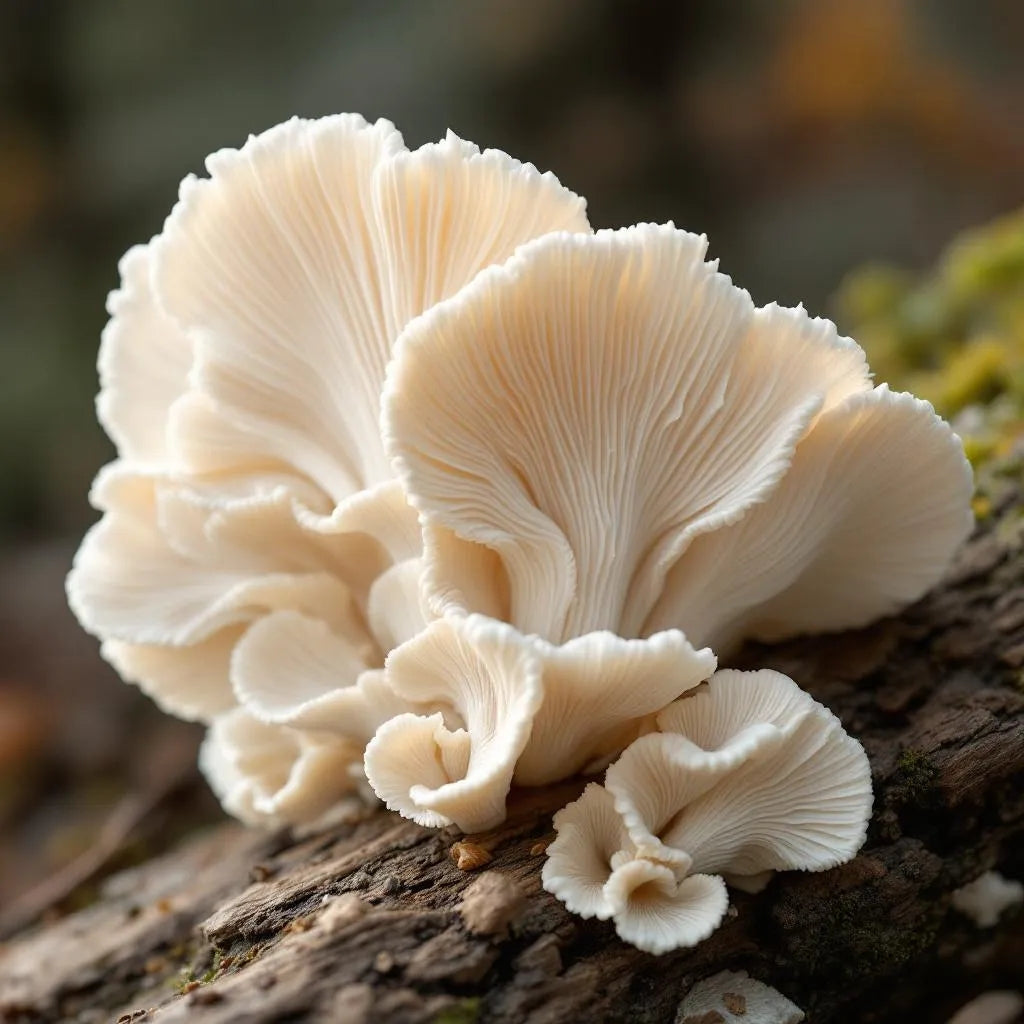
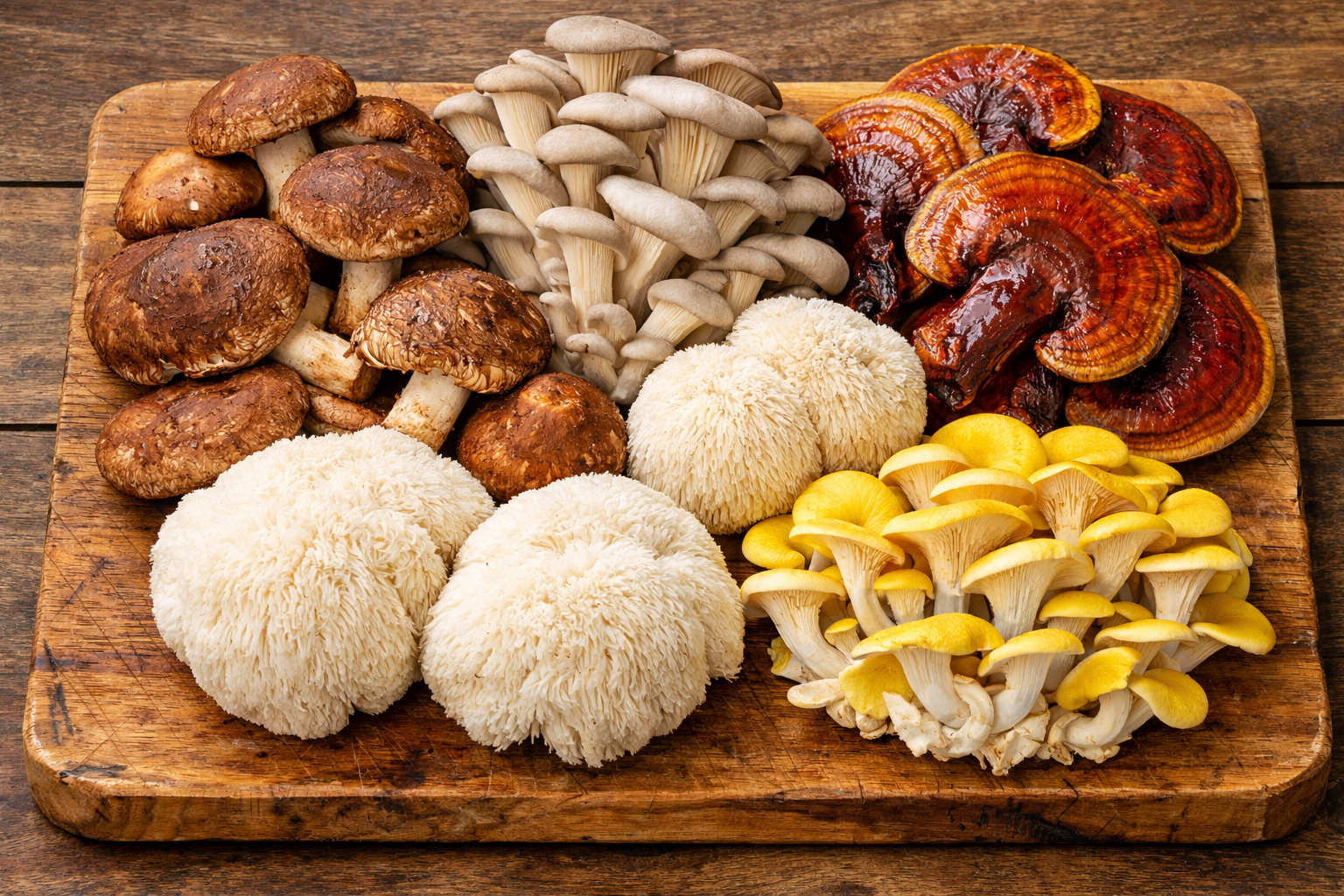
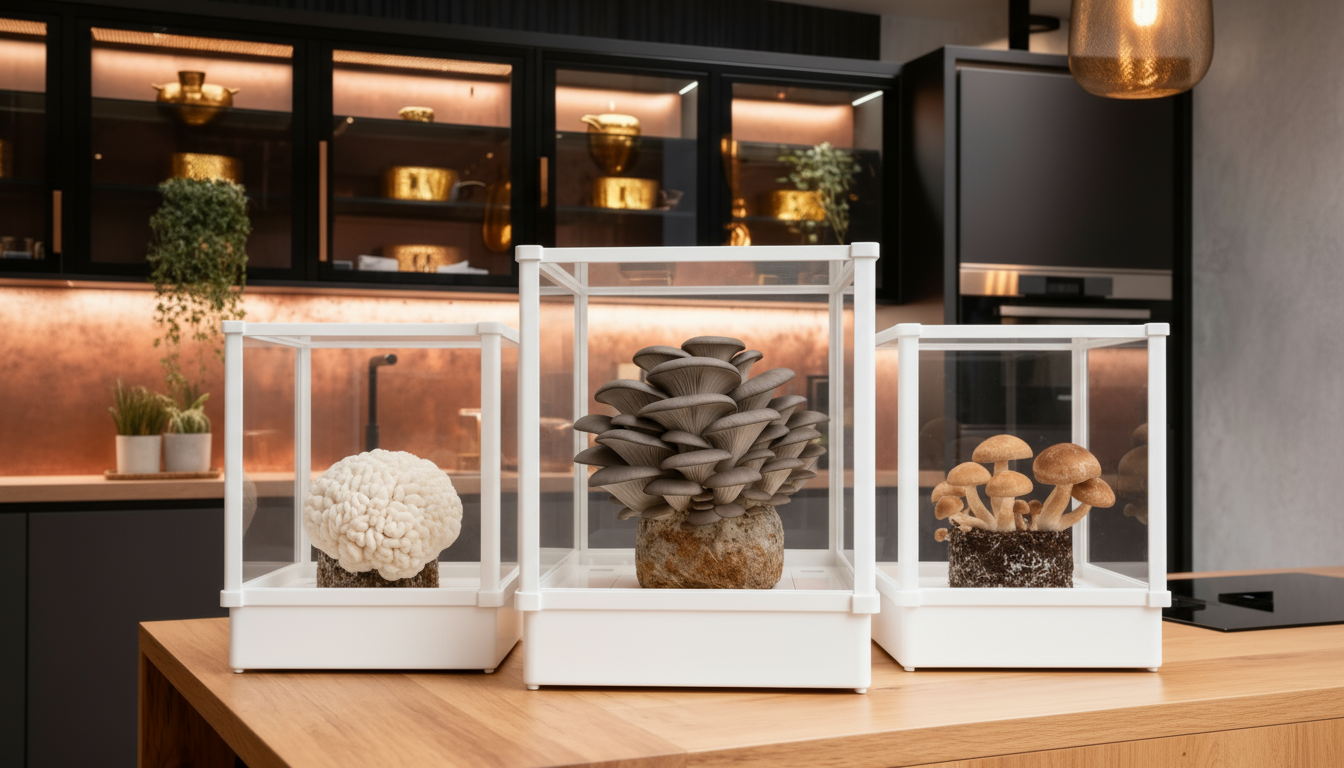
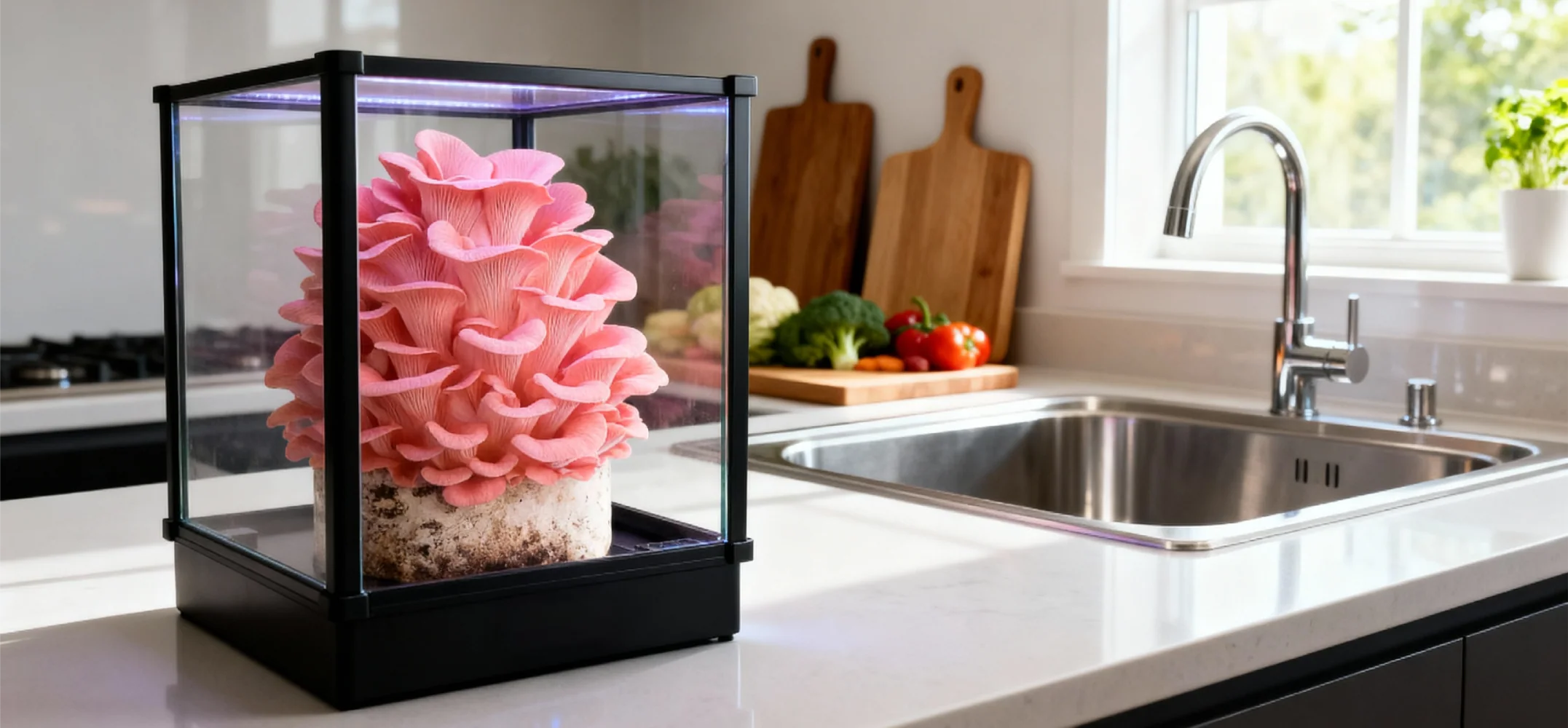
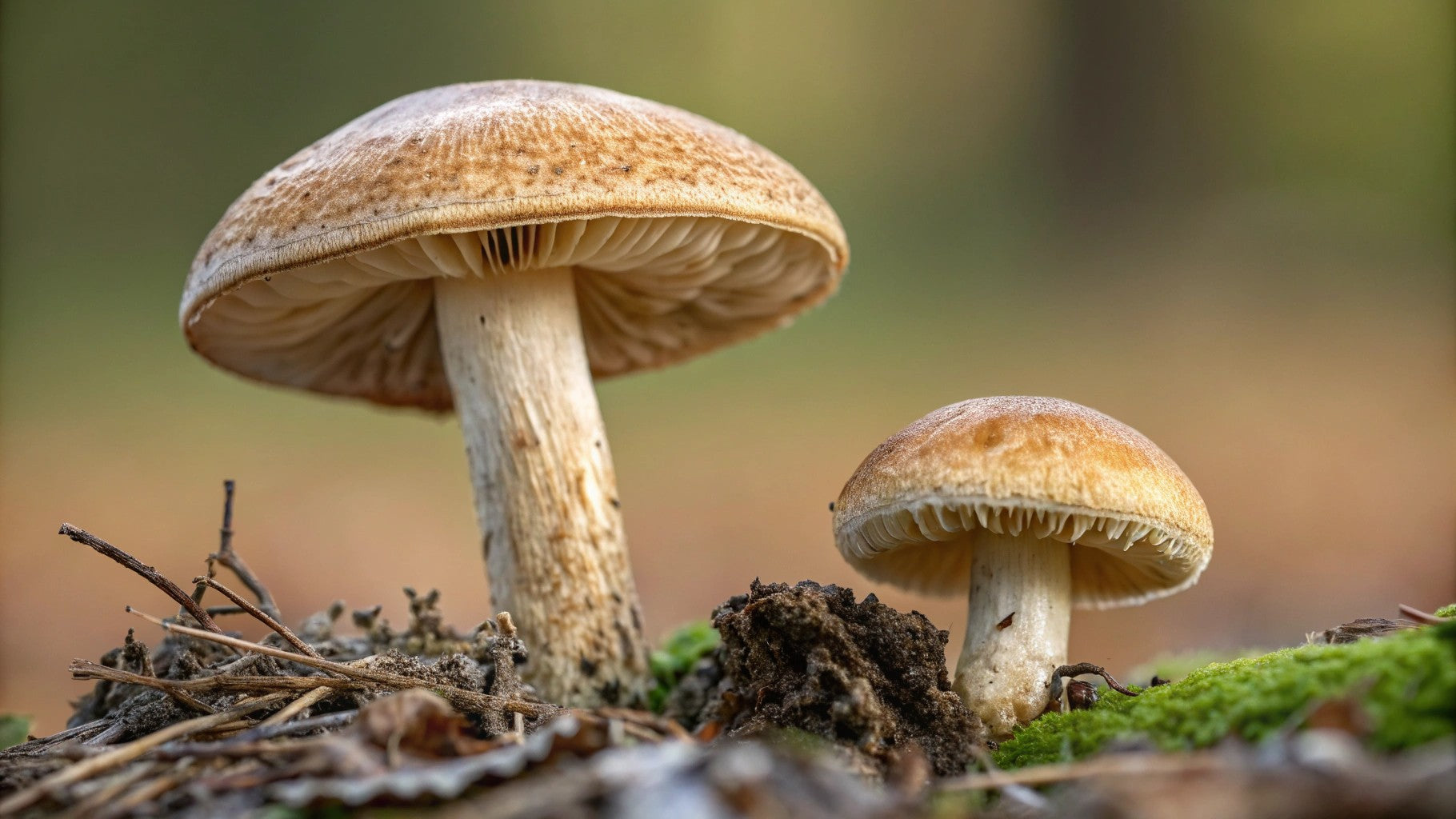
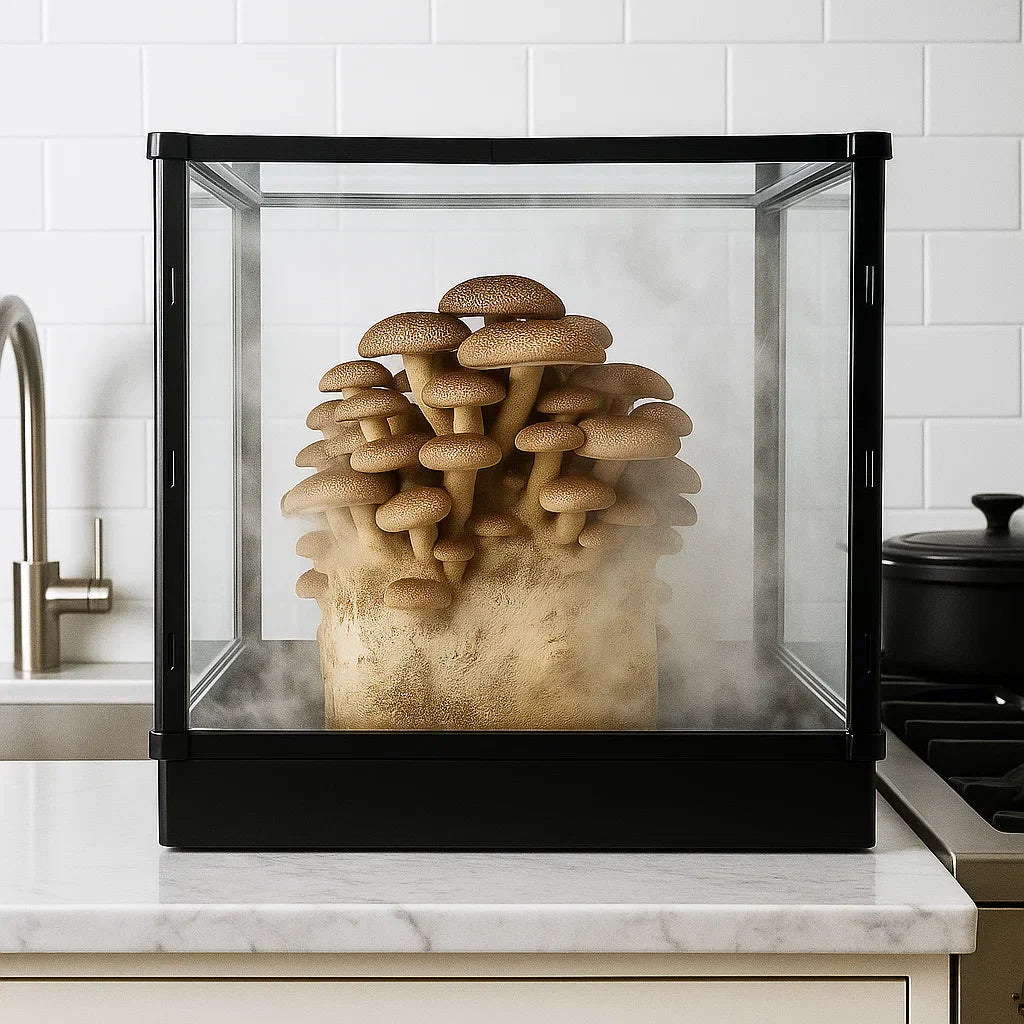
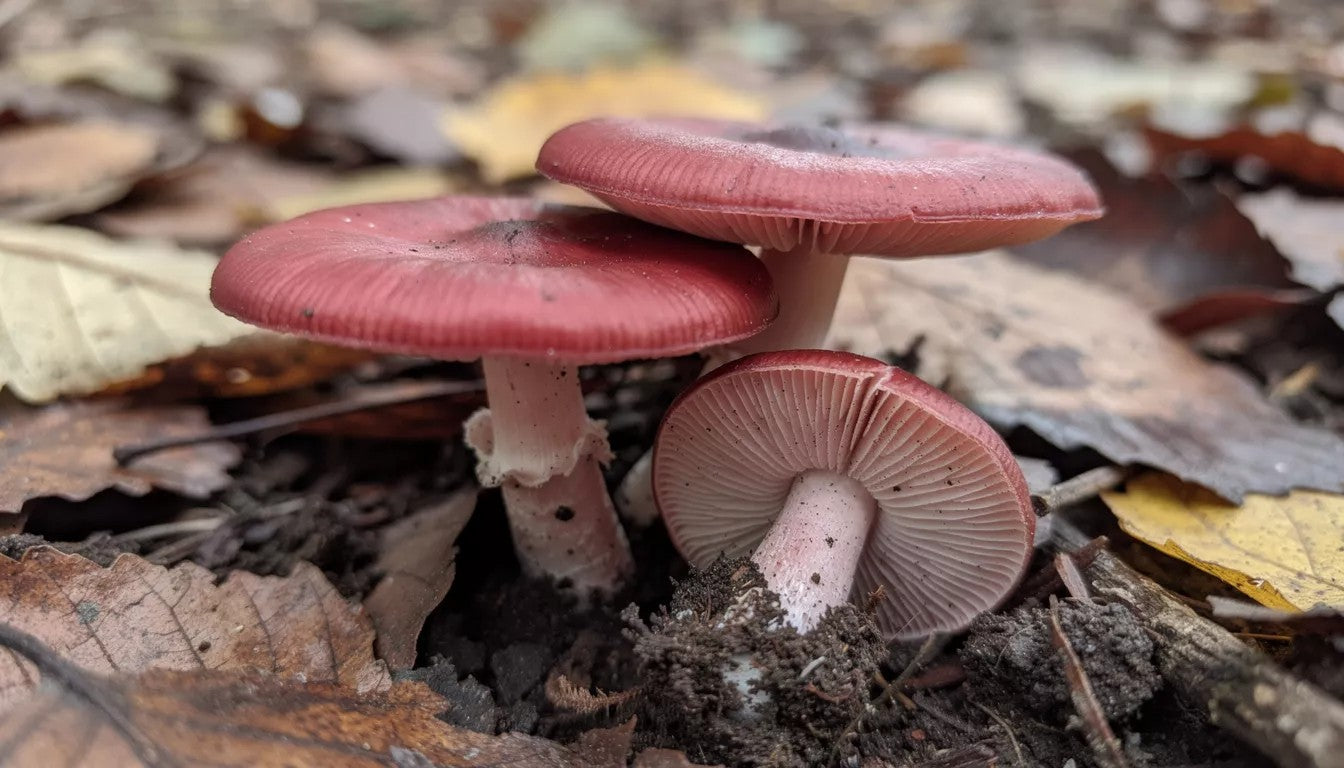
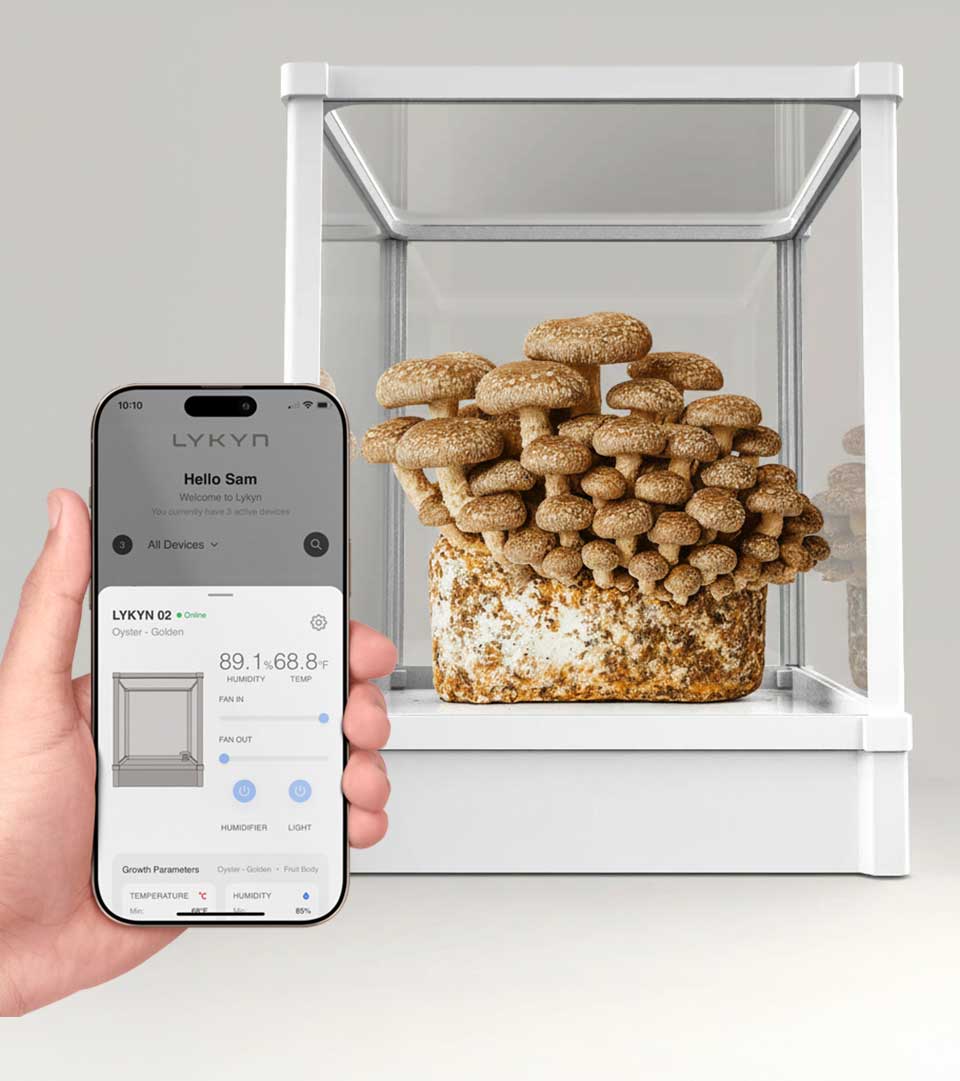





Share:
Automated Mushroom Grow Kit: The Future of Home Mushroom Cultivation
Growable Mushrooms: The Complete Guide to Home Cultivation Varieties